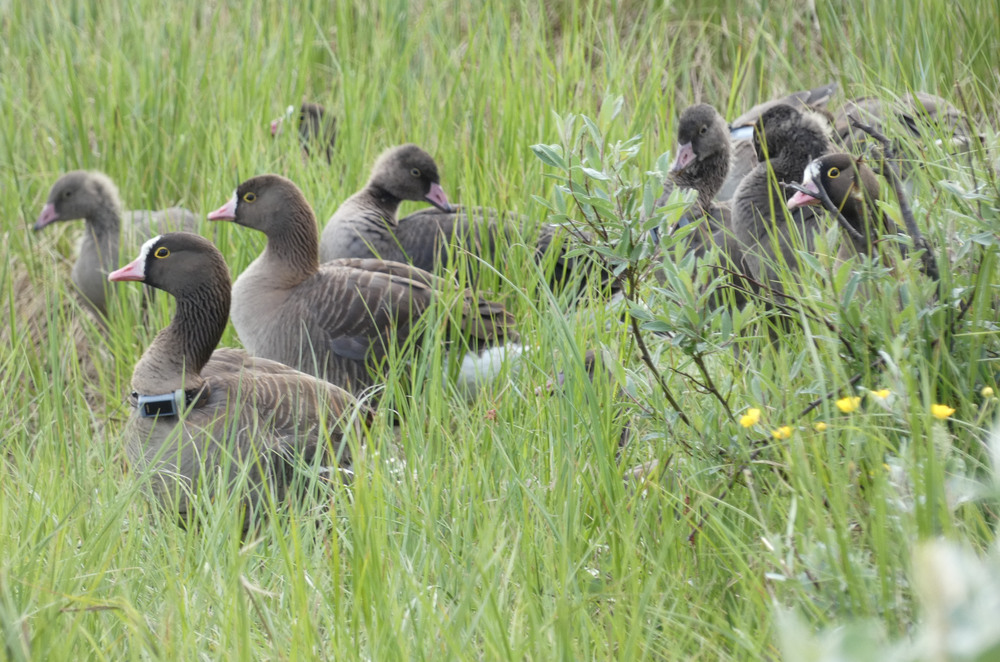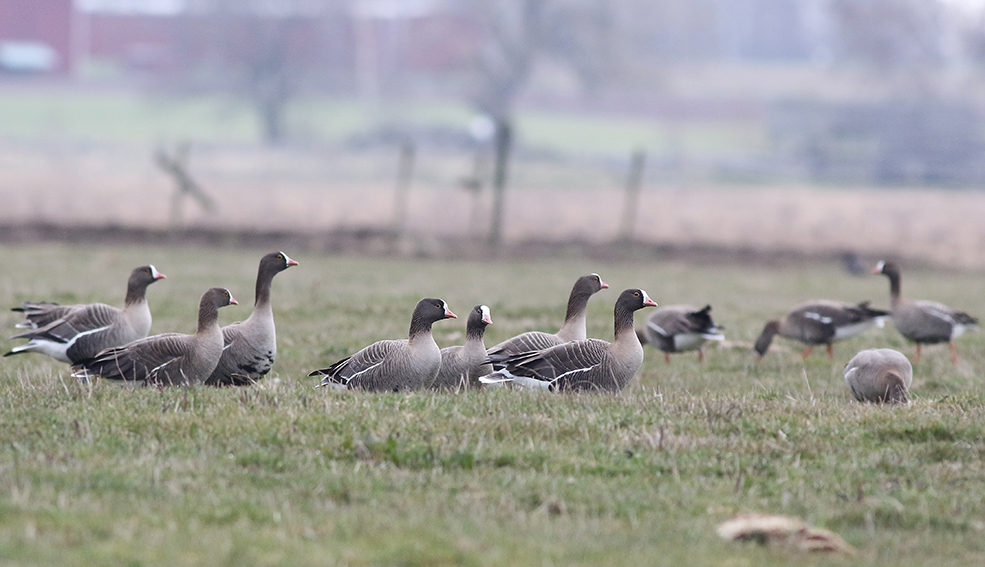Scientific publications
A short summary of some of the latest Scientific publications regarding the Swedish population of Lesser White-fronted Goose.
Based on all data collected from ringed released LWfG since the start of the reinforcement project in Sweden a comparison was made of the fate of individual birds being released with foster parents, as in the 'old' project and birds released without support of foster parents as has been done from 2010 onwards. The article is published in the journal Restoration Ecology, with the title: Reinforcement of an endangered goose population: the effect of age and interspecific fostering on survival of released birds has open access and can be retrieved via: https://onlinelibrary.wiley.com/doi/10.1111/rec.14286?af=R
Many thanks go to all contributing to the project during the years by fieldwork, and all people providing resightings of ringed birds in the past 40 years.
Short summary of main results:
1. Our analysis include data from 646 birds, released 1984-2017, including two different age classes, divided in two distinct periods. In the years 2000-2010 no birds were released.
2. LWfG released the same year as they were born were released with foster parents of Barnacle Geese in the first period and without support of foster parenting in the second period. Analysis show that use of foster parents enhanced survival rates, but these differences were detectable only in the first year of life. The higher survival can likely be explained by the fact that foster parents learned the released bird crucial behaviors (e.g. feeding, anti-predator and migration). Such transfer of knowledge between generations, so called social learning, has been described for many goose species.
3. Birds born the year before they were released, without foster parents in both periods, showed significantly lower survival than birds released the first year of life. But this difference between age classes was not so big when both age classes were released without foster parents in the second period. Likely the birds released as one-year olds, had several weeks to finalize the moulting, that is when they change feathers in the wing and cannot fly, making them highly vulnerable for up to a month.
4. Data suggest that most losses occurred during the acclimation period i.e. the weeks following the release, most likely due to predation of the released birds.
5. In conclusion the conservation benefits of using foster parents of other species must be balanced in relation to the risk of undesired behaviors such as hybridization and high costs. The authors advise other, future, conservation projects to carefully consider foster parenting as one method to improve survival probability, especially if capacity to produce individuals to be released is a limiting factor for conservation objectives.
Population genomics reveals lack of greater white-fronted goose introgression into the Swedish lesser white-fronted goose.
The complete genomes of 21 birds from the Swedish, Russian and Norwegian LWfG populations were sequenced, and compared with genomes from other goose species, including the GWfG. No evidence of interspecific introgression into the wild Swedish LWfG population in either nuclear genomic or mitochondrial data were found. Therefore, it is highly unlikely that the reinforcement programme between 1981 and 1999 led to the introduction of introgressed genes into the wild Swedish population.
Swedish LWfG birds are genetically distinct from the Russian and Norwegian populations and display comparatively low genomic diversity and high levels of inbreeding. The comparatively lower diversity in the population indicates a reduced potential to adapt to changes in the environment, but the second release programme 2010 may have resulted in a restoration of genetic diversity and mitigation of inbreeding in the population.
Diez-del-Molino D, von Seth, J., Gyllenstrand, N., Widemo, F., Liljebäck, N., Svensson, M., Sjögrem-Gulve, P., & Dalén, L. 2020. Population genomics reveals lack of greater white-fronted goose introgression into the Swedish lesser white-fronted goose. Scientific Reports Volume 10.
Use of foster parents in species conservation may cause conflicting objectives: hybridization between Lesser White-fronted Goose Anser erythropus and Barnacle Goose Branta leucopsis.
An LWfG conservation programme launched in the late 1970s used Barnacle Geese Branta leucopsis as foster parents. Starting in 2003, mixed pairs LWfG x BG produced at least 49 free-flying hybrid offspring until 2013. In total 1.7 % of all released young males with foster parents were observed to produce hybrid offspring with Barnacle Goose females. As a response, the conservation program decided to remove LWfG males in mixed pairs and their offspring in the wild.
In the Netherlands, hybrids were reported annually from 2003/2004 onwards. The highest numbers were recorded between 2008/2009 and 2013/2014 (maximum of 8–15 birds per year). Only one observation was reported from Finland and none from Norway. In the breeding area (and release site) of LWfG in the mountains of Arjeplog, no hybrids or mixed pairs were ever found.
No evidence that the hybrids ever posed a serious threat to LWfG breeding in Fennoscandia was found, but any translocation program using foster parents should seriously take into account the risk that hybrids between the target and foster species may be produced.
Liljebäck, N., Koffijberg, K., Kowallik, C., Månsson, J. & Andersson, Å. 2021. Use of foster parents in species conservation may cause conflicting objectives: hybridization between Lesser White-fronted Goose Anser erythropus and Barnacle Goose Branta leucopsis. Ornis Svecica, 31, 125–138.
Migration routes and stepping stones along the western flyway of Lesser White-fronted Geese (Anser erythropus).
This article is based on transmitter data from four Lesser White-fronted Geese which was caught and provided with a transmitter in Hudiksvall in 2015 and 2016. All four tracked LWfG visited the core breeding area in Swedish Lapland and migrated to winter in the Netherlands. The transmitter data was processed and statistically examined and the final result revealed several, so far unknown, stopover sites in Sweden, Denmark and northern Germany.
Of new sites identified, Roden Fed in Danish Lolland was pinpointed as a site of great importance since the LWfG was staging there for about four weeks annually. Of the in total 22 identified sites, 7 were not listed as SPAs and of the 14 sites that was listed, 6 of them lacked LWfG in the list of species special importance. The article spotlight the fact that from a species protection perspective mapping all sites used during migration and wintering is essential for a small and vulnerable population, like the Lesser White-fronted Goose in Western Europe. An effective protection regime for the mapped sites could prohibit threats regarding hunting or degradation of foraging areas. A complete chart of all the staging sites and their SPA status can be found in the article.
All tracked autumn migrations started from the same site (Lake Hjälstaviken, Sweden). In most years all birds also left this site on the same night, indicating coordinated departure of flocks for autumn migration. Data also describe that migration routes and strategies differed between spring and autumn which is in accordance with previous research on other goose species.
The study found little evidence of geographically overlap of migration routes described for the Norwegian and Russian LWfG populations. Therefore, the authors suggest the Swedish population can be viewed as a separate conservation unit.
Kruckenberg, H., Moonen, S., Kölzsch, A., Liljebäck, N., Müskens, G.J.D.M. 2023. Migration routes and stepping stones along the western flyway of Lesser White-fronted Geese (Anser erythropus). Bird Conservation International, 33, e42, 1–8.
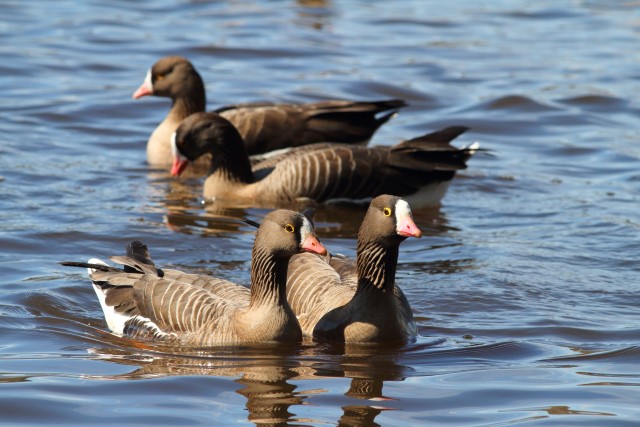
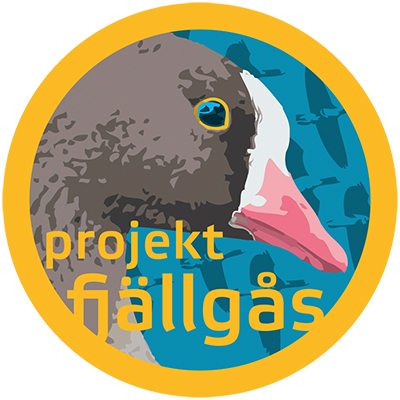
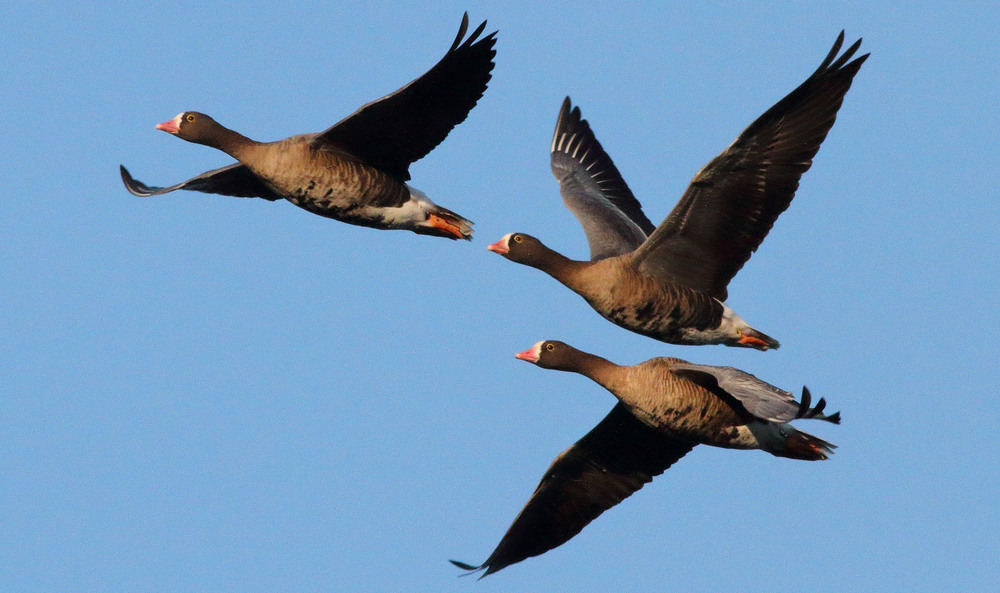
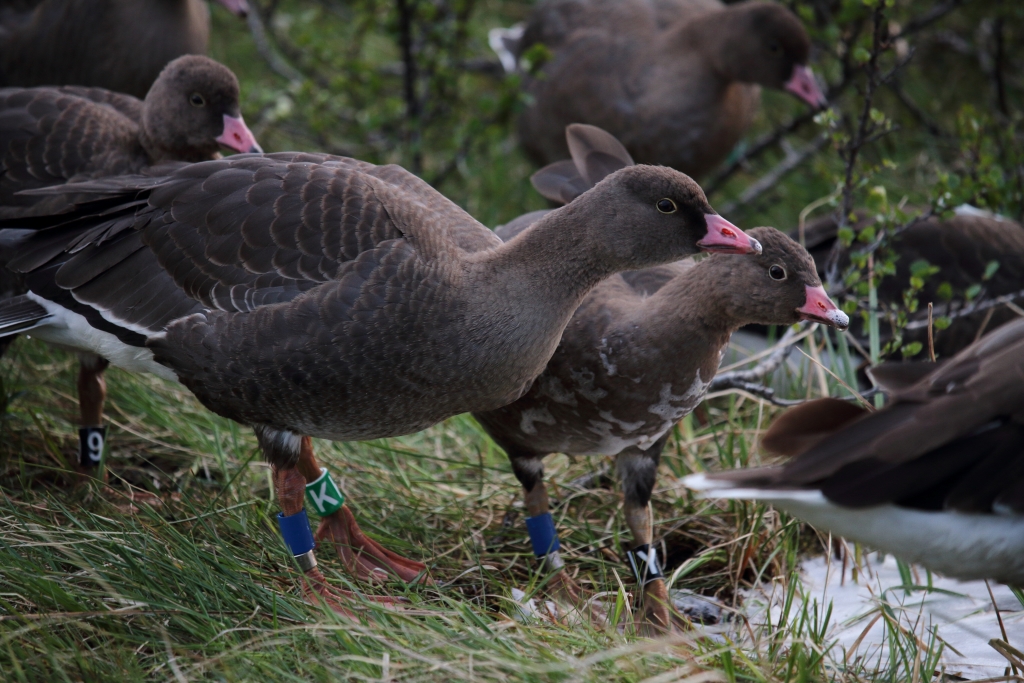

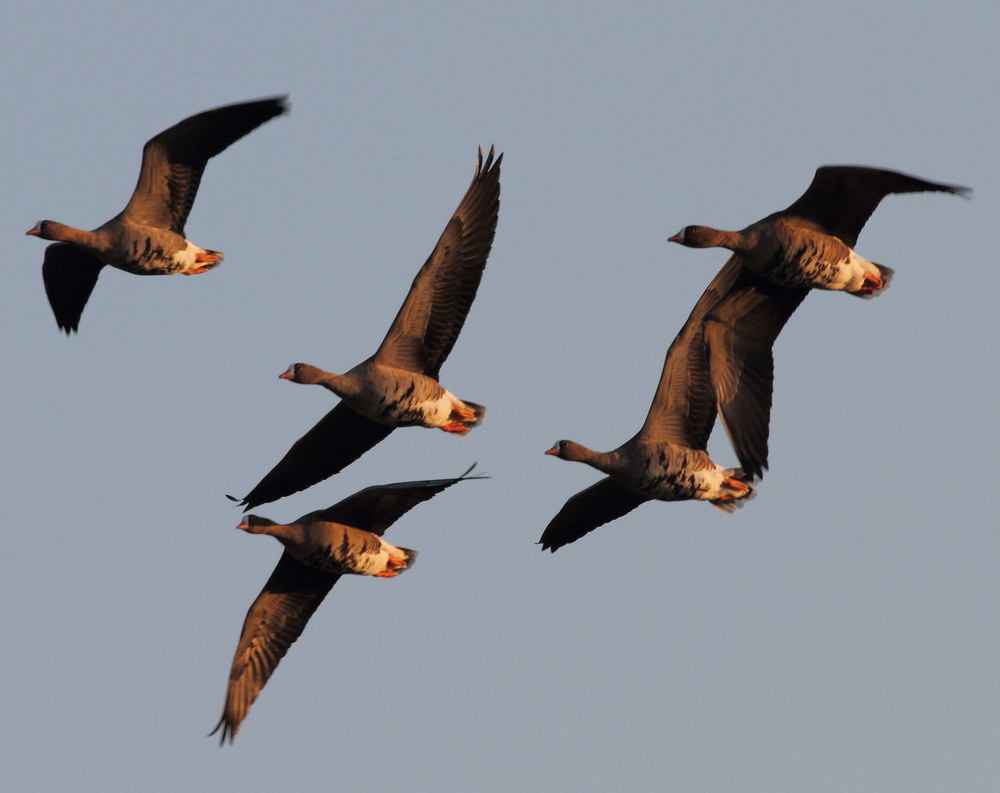
 Foto: Niklas Liljebäck
Foto: Niklas Liljebäck